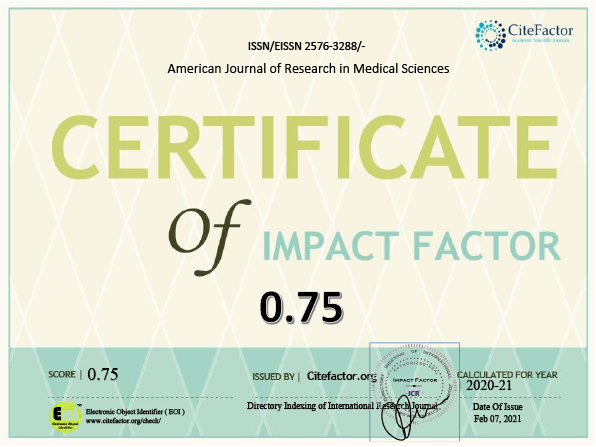Effect of camel milk administration on oxidative stress in sickle cell anemic patients
Aminu Lailaba Abubakar, Saudatu Faruk, Abdullahi Dandare, Murtala M. Ahmad, Muktari Jangebe Ladan
Abstract
Objective: Sickle cell anemia (SCA) is one of the leading causes of child morbidity and mortality in Nigeria. About 25% of the country’s population is carriers of the mutant gene responsible for the disease. Free radicals promote irreversible sickling of red blood cells and damage its membrane. This study was designed to evaluate the effect of camel milk administration on oxidative stress biomarkers in SCA patients.
Methods: Forty-five children aged 5–15 years old were recruited for the study. The patients were randomly divided into three groups, 1) HbAA: control group administered with 10 ml/kg of camel milk, 2) HbSS-1: SCA subject administered with routine SCA drugs, 3) HbSS-2: SCA administered with SCA drugs plus 10 ml/kg of camel milk.
Results: It was observed that 3 weeks of camel milk administration had resulted in significant changes in oxidative stress biomarkers. Serum level of glutathione, vitamin C and E were significantly increased (P < 0.05) in HbAA and HbSS-2 subject compared to HbSS-1. Similarly, the activities of antioxidant enzymes (superoxide dismutase activity and catalase) were increased due to the camel milk administration. On the other hand, serum malondiayldehyde (MDA) level decreases in all the groups investigated (HbAA, HbSS-1, and HbSS-2). MDA level significantly decreased in HbSS-2 at the third week of camel milk administration compared to other groups.
Conclusion: These findings suggest that camel milk could be beneficial in decreasing oxidative stress by improving the activities of antioxidant enzymes, and increasing the level of non enzymatic antioxidants in SCA patients. Thus, camel milk could be used in relieving the conditions of SCA patients.







